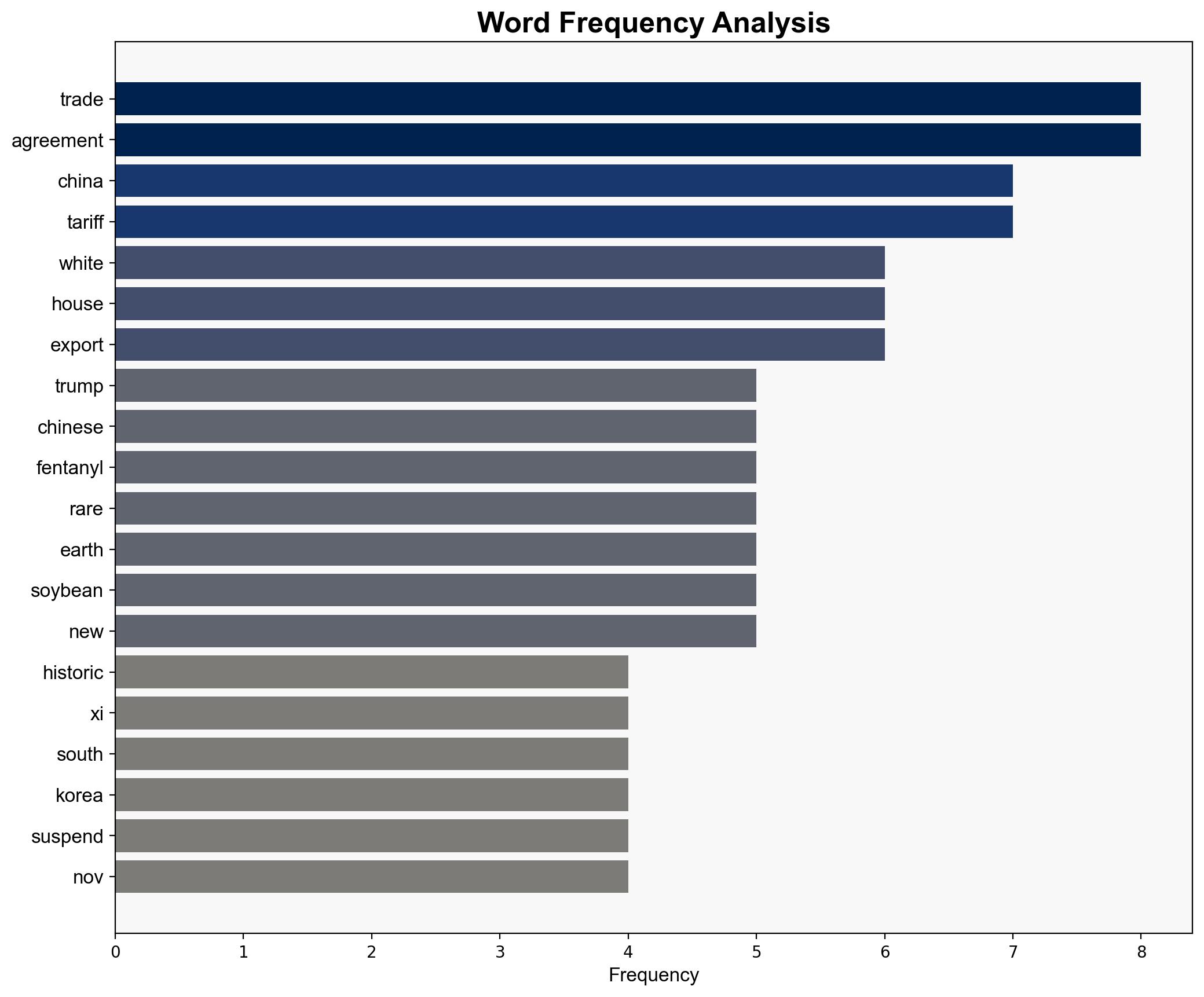White House unveils details of historic trade agreement with China following Trump-Xi meeting – Fox Business
Published on: 2025-11-02
Intelligence Report: White House unveils details of historic trade agreement with China following Trump-Xi meeting – Fox Business
1. BLUF (Bottom Line Up Front)
The trade agreement between the United States and China, following the Trump-Xi meeting, represents a strategic maneuver to ease economic tensions and secure commitments on key issues such as fentanyl control and agricultural trade. The most supported hypothesis is that this agreement is primarily a strategic win for the U.S., aimed at bolstering economic strength and national security. Confidence level: Moderate. Recommended action: Monitor implementation closely and prepare contingency plans for potential non-compliance by China.
2. Competing Hypotheses
Hypothesis 1: The trade agreement is a genuine effort by both nations to de-escalate trade tensions and foster economic cooperation, with China committed to fulfilling its promises on fentanyl control and agricultural purchases.
Hypothesis 2: The agreement is largely symbolic, with China making commitments that may not be fully realized, serving more as a political tool for both leaders to claim victory rather than a substantive shift in trade relations.
3. Key Assumptions and Red Flags
Assumptions:
– China will adhere to the commitments outlined in the agreement.
– The U.S. administration will effectively enforce compliance and address any breaches.
Red Flags:
– Historical precedent of China not fully adhering to trade agreements.
– Lack of specific enforcement mechanisms detailed in the agreement.
– Potential overstatement of the agreement’s impact by both governments for domestic political gain.
4. Implications and Strategic Risks
The agreement could stabilize U.S.-China economic relations temporarily, but the lack of robust enforcement mechanisms poses a risk of non-compliance. Economically, failure to adhere could exacerbate tensions and lead to retaliatory measures. Geopolitically, the agreement might influence U.S. relations with other Asian countries, potentially impacting regional alliances and trade dynamics.
5. Recommendations and Outlook
- Establish a monitoring framework to track China’s compliance with the agreement, focusing on fentanyl control and agricultural purchases.
- Engage with allies in Asia to ensure a coordinated approach to regional trade and security issues.
- Scenario-based projections:
- Best Case: Full compliance by China leads to strengthened economic ties and reduced tensions.
- Worst Case: Non-compliance results in renewed trade conflicts and economic instability.
- Most Likely: Partial compliance with ongoing negotiations to address shortfalls.
6. Key Individuals and Entities
– Donald Trump
– Xi Jinping
7. Thematic Tags
national security threats, economic diplomacy, U.S.-China relations, trade agreements





